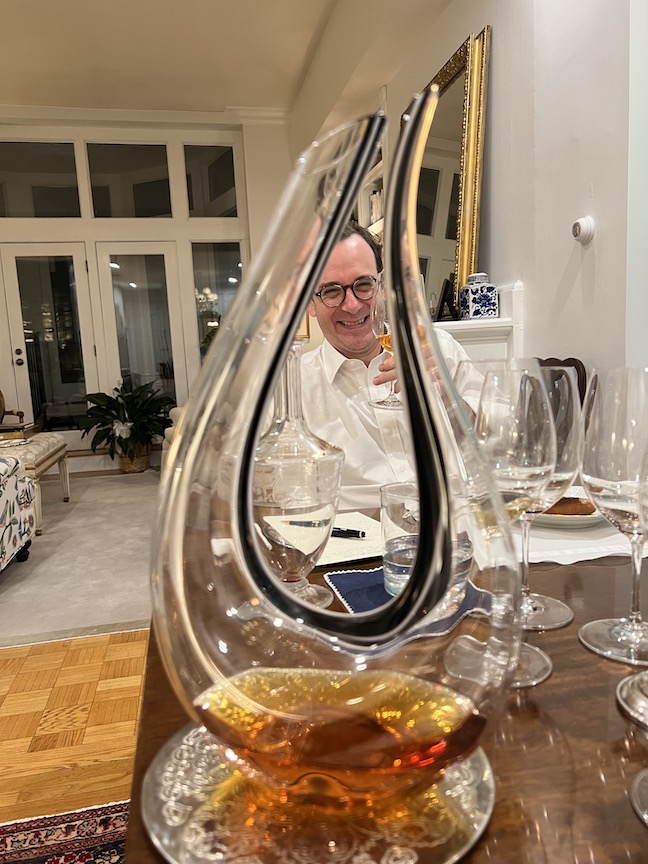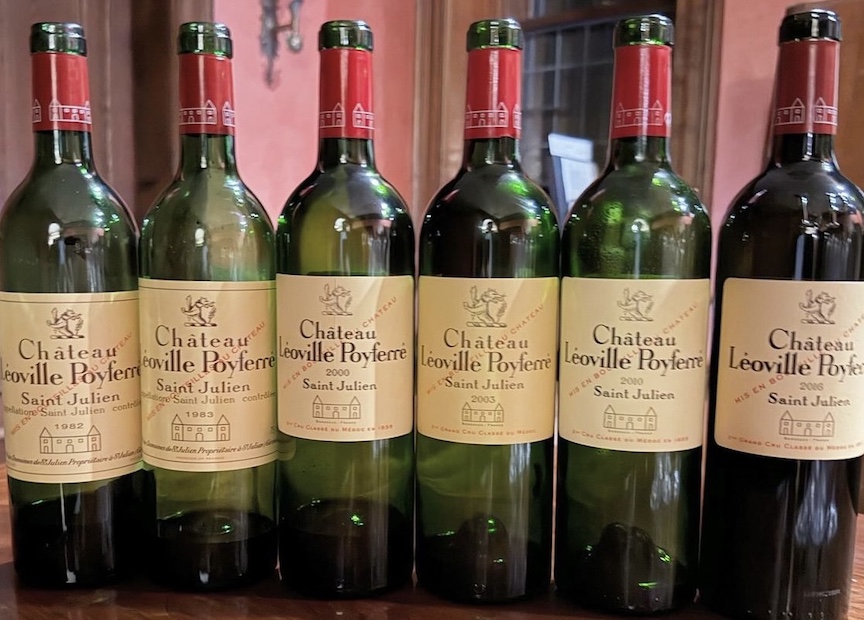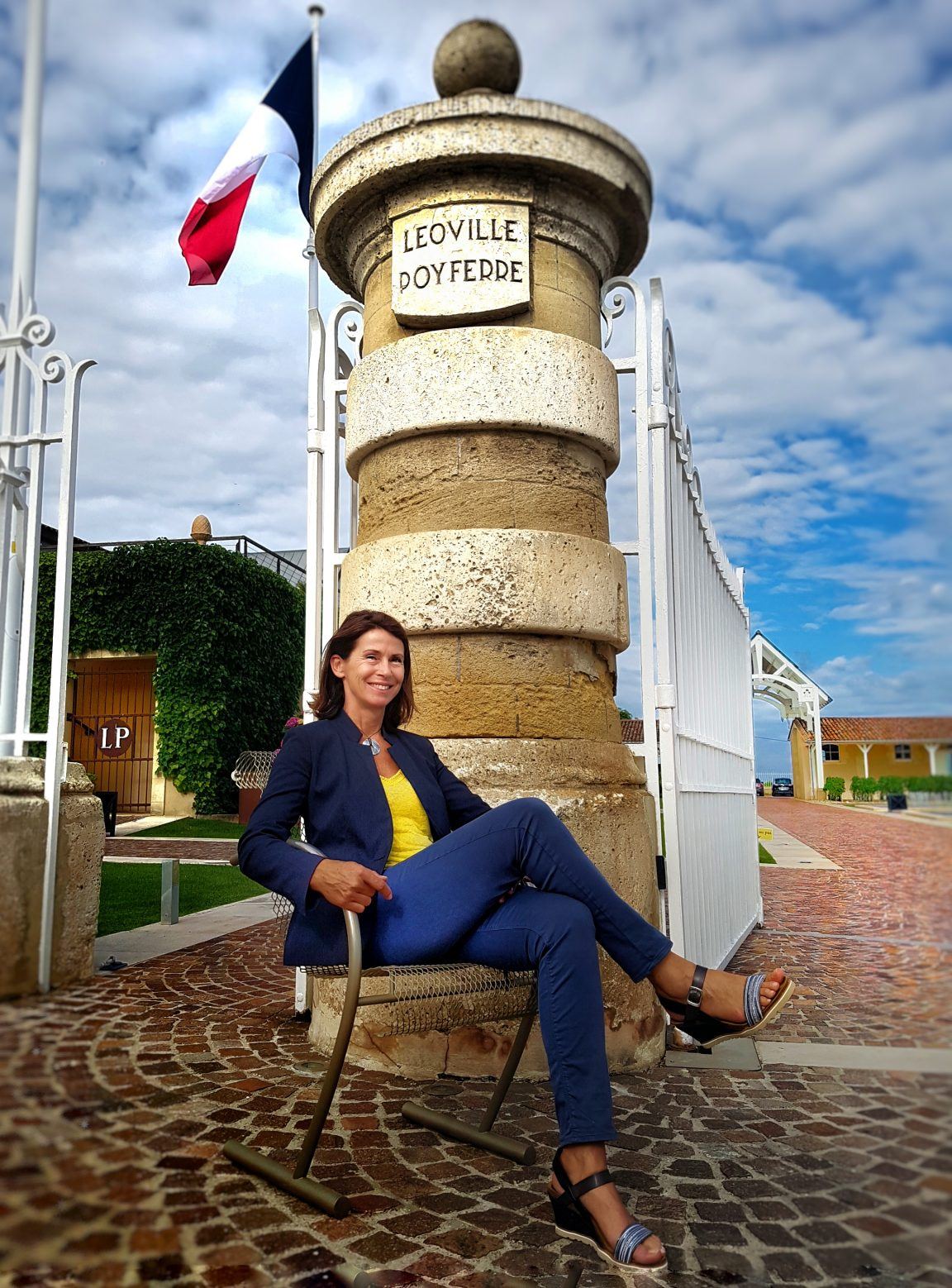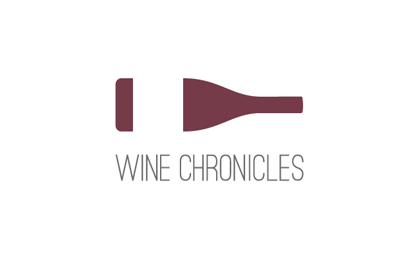A focus on Léoville Poyferré – and more – in Boston
By Panos Kakaviatos for wine-chronicles.com
30 January 2024
Many thanks to Marc Bouffard aka Englishmans Claret – a must-follow on Instagram for anyone who appreciates fine wine – for a wonderful dinner and lunch at Boston’s Somerset Club, featuring the wines of the family of Sara Lecompte Cuvelier, who own the storied second growth in St. Julien, Château Léoville Poyferré along with Château Le Crock, in Saint Estèphe, among other properties.
In less than 24 hours, I had the great pleasure to meet new wine loving friends in a lovely setting and exceptional cuisine by celebrated American chef Michael Shannon to match no less than two verticals of Château Léoville Poyferré, including 1982, 2000, 2003, 2005, 2010 and 2016, among others. And thanks to Marc for sourcing a surprisingly lively 1942! It was also great to see again Ryan Nagle, aka romanee_ryan on Instagram, who is also very passionate about wine, and you should follow him, too.
Marc is drafting a book on the wines of Saint Julien, having visited the estates of this appellation, and he has tasted through vintages as old as 1900, with almost daily updates of tastings on his Instagram, which has nearly 29,000 followers and counting.
As a published wine writer for over 25 years, I appreciate Marc’s genuine wine passion, tasting acumen, and sincere geniality. For the two tasting events, he gathered people from a variety of backgrounds who share a common fine wine interest – without an ounce of pretentiousness.

Marc Bouffard, aka englishmans_claret on Instagram, is working on a book on Saint Julien, but here we are enjoying a fine Yquem on a previous occasion in Boston
The first vertical over dinner on January 23rd began with a tasty grower’s Champagne – François Secondé Grand Cru Brut NV Sillery Champagne – to match pan-seared sea scallops with pear parsnip purée, pomegranate reduction and petite chicory. The bubbly proved smooth and vibrant, with pleasing petillance texture. I liked the crisp ripe apple, lemon, and floral aspects as well as telltale brioche.
The first course featured 2016 and 2010, two-star vintages, and while the 2016 at this stage conveys more charm and impressive structure, time in glass showcases the true vintage greatness of the 2010 (as opposed to so many hyped vintages). Observations from memory as I had left my original notes behind from that evening: The 2016 deserves all the plaudits it gets as a balanced and ripe wine with nuance and freshness, more so than in 2018 or 2019. Its structure recalls the exceptional 2005, but with superior charm. The 2010, which at first seemed like a barrel sample, opened to reveal even greater palate depth and breadth with pleasing balancing acidity. A gem, the 2010 deserves at least 10 more years in your cellar before beginning to enter a proper drinking window, and both proved fine matches with the braised beef and mushroom homemade ravioli, served with a delectable short rib and steak-like King Oyster mushrooms, with black truffle slices and aged Parmesan. Many participants liked this serving the most, as did I. Point scores? I would give the 2010 a potential 100 points, but for now, 98. The 2016 easily gets 97+.

Then came the 2003, and Léoville Poyferré counts among the most successful from that torrid vintage, revealing surprisingly bright fruit, concentration, and smooth tannin – without a hint of raisin that is often detected in too many 2003s. A success, which I recall having enjoyed some 15 years ago with the now retired Didier Cuvelier along with the 1982, see below. The 2000 has more evident balance and in that sense is a “better wine”, but not as exciting as the 2003 – at least for now. I like the 2000 vintage from the Médoc, and this wine is no exception, but it seemed in a lower gear compared to the 2003 at this stage. Both went well with olive poached lamb tenderloin and lightly spiced – and so savory – roasted lamb noisette. Go figure: lamb and the Médoc? Ideal! The carrot purée with shaved fennel accentuated the pairing without being obtrusive. Point scores? The 2003 gets 98 points just because it is so damn good for the vintage, while the 2000 gets 95 points. For now.
Then came the 1983 and the 1982, which proved to be my wine of the evening, singing beautifully as it has done for so many years. Robust, smooth, refined, and balanced, at just over 40 years in bottle, it remains excellent. Some bottle variation was reflected for the 1983, and at our table it was not as exciting as another bottle I later tried after dinner. When you get a good bottle of the 1983, cherish it for both concentration and mint-like freshness. 1983 is a cooler vintage than 1982, so not as seductive, but certainly refined. When I had tasted the 1982 along with the 2003 some 15 years ago in Bordeaux, then director and co-owner Didier Cuvelier explained how the 2003 was crafted with half the yields, so it was more “concentrated”. And when the 1982 was made, no second wine existed. I liked both and concluded that high yields do not mean that the wine is not as good. Indeed, even today, a classy wine like Sociando Mallet is crafted from quite high yields, as high as 55 hectoliters per hectare. So, you can have both quality and quantity, and the 1982 continues to prove that point. Both wines went very well with the Comté cheese. Point scores? The 1982 gets 98 points, easily. The 1983, from a good bottle, 95.
The dinner ended with superb mascarpone mousse, citrus marinated strawberries, strawberry-rosé sorbet, and pistachio rosemary crumbs, paired with the classic rosé Champagne, my “go-to” NV rosé Champagne, the Billecart-Salmon, which – as ever – provides freshness and fruit, in a delightfully smooth, fine bubbly texture.
After seating and throughout the dinner, I could not but praise the sommelier’s keen sense of taste and decorum, gracefully choreographing the wine service: it was a pleasure to be served by his staff.
We later gathered for a surprise bottle of 1942 Léoville Poyferré, which Marc brought. Although the VA as unmistakable, I really appreciated the life in this wartime era wine, which had from memory almost toffee like flavor with forest floor and baked red fruit. We spoke about how the harvest occurred as the pivotal Battle of Stalingrad began, the turning point of World War II. What was it like to have harvested at that time? Who worked the vineyard? Many Frenchmen had been transferred for forced labor in German factories. After sipping this nearly 82-year-old wine, another surprise arrived: an 1894 Madeira which proved both fiery and svelte, a most delicious drink, which we enjoyed by a fireside. It was getting late however, and we soon retired, looking forward to the lunch the next day.
Lunchtime with six more wines
As we gathered with a smaller group for lunch on January 24th, the table setting was just as impressive, in a most elegant room. We began with a dry Bordeaux white that reflects the rather positive aspects of the 2021 vintage for white wine: smooth, rather crisp, and tasty, this “R de Rieussec” from the famous late harvest producer in Sauternes. As some readers may know, these days Sauternes is producing at least as much (if not more) dry white wine than late harvest “sweet” wines, although the dry wines are not Sauternes appellation wines, but Bordeaux AOC. 2021 whites can be very good, but not as good as, say, 2017 or 2014. I and others tout them partly because the reds are so often so average. And overpriced. But enough 2021 bashing. The wine paired nicely enough with the more impressive first course: scallop and grapefruit ceviche with soft roasted radish and a delicious buttermilk tarragon vinaigrette: I can tell you that the choice of breads offered were also readily used to scoop up that vinaigrette!
The second course featured the first of six wines that we enjoyed from the Cuvelier family. The Château Le Crock Saint Estèphe 2017 was very tasty, but overshadowed by the Château Moulin Riche Saint Julien 2016, which can be explained by the vintage difference. 2017 can be solid if not especially exceptional, while 2016 is excellent to exceptional. Le Crock is too often overlooked as it was not part of the classified wines from the 1855 ranking that endures today, and yet it has excellent terroir. The wine revealed concentration and ripe fruit, although lacking the éclat from the Moulin Riche, which many years ago was considered the second wine of Léoville Poyferré but since 2009, it is no longer associated with the second growth, showcasing its own identity coming from 21 hectares of gravel with limestone soils, and known for having a high proportion of Petit Verdot. A mid-weight Saint Julien, lacking the depth and power of the grand second growth, Moulin Riche nonetheless proved thoroughly pleasing with its expressions of ripe red- and black berry fruit, floral hints, and burgeoning creosote, but above a beguiling freshness that beckoned further drinking, proving a fine match for excellent roast chicken breast. Point scores? The Le Crock gets 90 points, while the Moulin Riche gets 92.
The third course featured a comparison between the veritable second wine of Château Léoville Poyferré, the Pavillon de Léoville Poyferré and the grand vin, both from the 2015 vintage. I noticed later some participants repouring this grand wine just after lunch, and indeed, the 2015 has full body, concentration, and depth, with the second wine more an echo of the first, and rather tasty. Still, the 2015 was not my favorite among the wines tasted, for two reasons: first, it is too young and needs to develop more nuance, and second, it is rather a decadent style that lacks the pristine balance of, say, 2016 or 2020. It was said that because of more rain further north in the Médoc, 2015 was a rather uneven vintage, and while that may apply to Saint Estèphe (I prefer the 2014 vintage in Saint Estèphe), it does not apply so much to Saint Julien, so you get a sunny vintage wine with plenty of opulence. The wines paired well enough with the classy flat iron steak served with roasted mushrooms and delightful potato purée, although I preferred the next two (older) vintages with this serving. Point scores? The second wine gets 90 points, while the first wine gets 95.
The final serving proved to be the best, and not just because of the magnificent 2005 Château Léoville Poyferré, which now shows much ripeness and refinement, after several years of more structured hibernation. Some tasters seem still “on the fence” with 2005, especially when compared to the sexier 2009 and the larger scaled 2010 but give this vintage time: it repays in spades. Marc absolutely loved its burgeoning complexity, elegance, power, and balance, as did I. A truly great wine. But let us not forget the 2011, served alongside, because this vintage also is improving with time. While not as balanced as, say, 2008, which also is known for its acidity and structure, the 2011 delights the senses with linear focus and brightness, a good foil for both the steak and the 24-month aged Mimolette cheese. Point scores? The 2005 gets 98 points and could get a higher score with more time in bottle, while the 2011 gets 94 points.

Sara Lecompte Cuvelier at Château Léoville Poyferré (Photo courtesy Château Léoville Poyferré)
Many thanks to Sara Lecompte Cuvelier, who took over from her cousin Didier Cuvelier in 2017. I recall organizing a dinner for her in early 2018 at the French embassy in Washington D.C. Having previously worked in human resources following studies in economic and social administration Sara comes from a non-wine background but has since overcome a large learning curve to the point that she feels comfortable and confident talking not only about the wines, but also about the business of wine. Much of that assurance comes from her talented team of over 50 employees, including longtime oenologist Isabelle Davin. And I suspect that her human resources background has helped in managing the estate, as she often talks about having taken a more democratic approach to management. In any case, Sara is also a very friendly person, and it was such a pleasure to have met her again in such an agreeable setting in Boston. Participants applauded Sara for having provided all the wines for the dinner and lunch, delivered directly from the estate. Readers should know that Sara comes from the Cuvelier family on the Left Bank, not to be confused with the Cuvelier family of Clos Fourtet in Saint Emilion.
Sara also shared insightful comments about the wines and what she believes should be done to ensure steady sales, as Bordeaux faces pressure to lower prices after the 2021 and 2022 campaigns. Indeed, we had frank discussions of the business of Bordeaux, and the justified pressure on all estates to effectively lower prices in 2023, after steady increases in the last three vintages that have left wines stuck in warehouses. The 2019 vintage sold well, because the hype was missing due to Covid blocking the futures campaign, the 2020 vintage was priced higher. But then many 2021 vintage wines were priced at least the same as the 2020, if not higher, which still leaves me perplexed. And the 2022 vintage – billed as yet another “vintage of the century” – saw even higher prices, which led to a mediocre futures campaign. I look forward to trying the 2023 from barrel this April, with hope for reasonable pricing.
 Wine Chronicles
Wine Chronicles
Share This